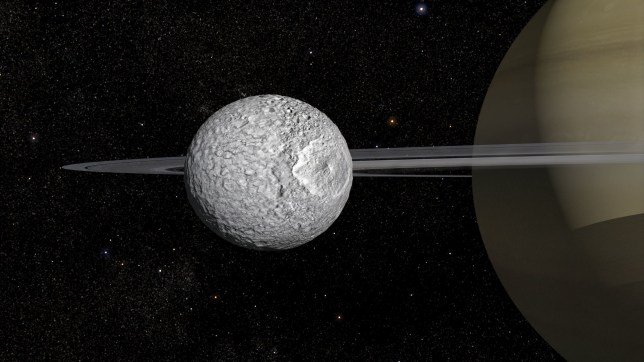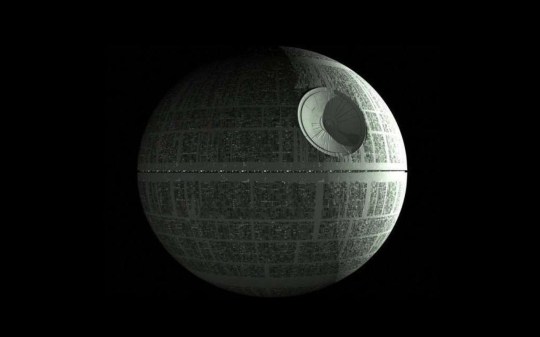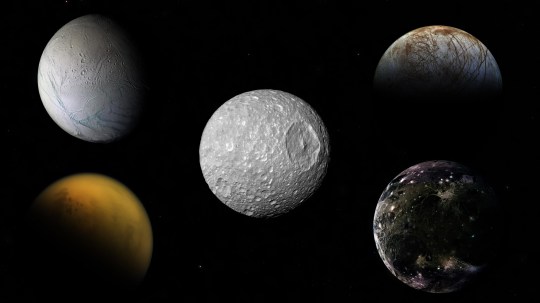An ocean may be hiding beneath the icy cratered surface of Saturn’s ‘Death Star’ moon, making it ‘a prime candidate’ for alien life, scientists have said.
Astronomers believe liquid water formed on Mimas – the planet’s smallest and innermost moon – somewhere between five to 15 million years ago, making it much younger than Earth’s oceans, which are thought to be more than four billion years old.
Mimas is often compared to the Death Star from Star Wars because of its large Herschel Crater, which resembles the hollowed-out shape of the fictional space station’s laser weapon.
But with no signs of any activity, this small moon – around just 400 kilometres in diameter – would have been the last place expected to be hiding a global ocean beneath its surface.
However, the researchers said that contrary to all expectations, Mimas appears to have an ocean just 12 to 18 miles below its icy outer shell.
It joins a family of moons believed to have oceans beneath their surfaces – Jupiter’s Europa and Ganymede, and Saturn’s Titan and Enceladus.
Dr Nick Cooper, honorary research fellow at Queen Mary University of London, said: ‘Mimas is a small moon, only about 400 kilometres in diameter, and its heavily cratered surface gave no hint of the hidden ocean beneath.
‘This discovery adds Mimas to an exclusive club of moons with internal oceans, including Enceladus and Europa, but with a unique difference – its ocean is remarkably young, estimated to be only five to 15 million years old.’
He added: ‘The existence of a recently formed liquid water ocean makes Mimas a prime candidate for study, for researchers investigating the origin of life.’
For the study, published in the journal Nature, a team led by Dr Valery Lainey of the Paris Observatory in France, analysed data from Nasa’s Cassini spacecraft.
Cassini studied Saturn and its moons for more than a decade before crashing into the planet in 2017.
By closely examining the subtle changes in Mimas’s orbit, the researchers said they were able to suggest the presence of a hidden ocean and estimate its size and depth.
The researchers said these findings have also allowed them to rule out the possibility of a rocky core inside Mimas, saying the existence of global internal oceans ‘is the only scenario compatible with observations’.
The team said their discovery suggests that even small and seemingly inactive moons can harbour hidden oceans capable of supporting conditions essential to the formation of life.
MORE : ‘Icy plumes’ on Saturn’s moon Enceladus could hold key to alien life
MORE : Saturn’s rings are going to disappear in 2025
MORE : This ‘robot snake’ could probe Saturn’s moon in search for alien life
Get your need-to-know
latest news, feel-good stories, analysis and more
This site is protected by reCAPTCHA and the Google Privacy Policy and Terms of Service apply.












